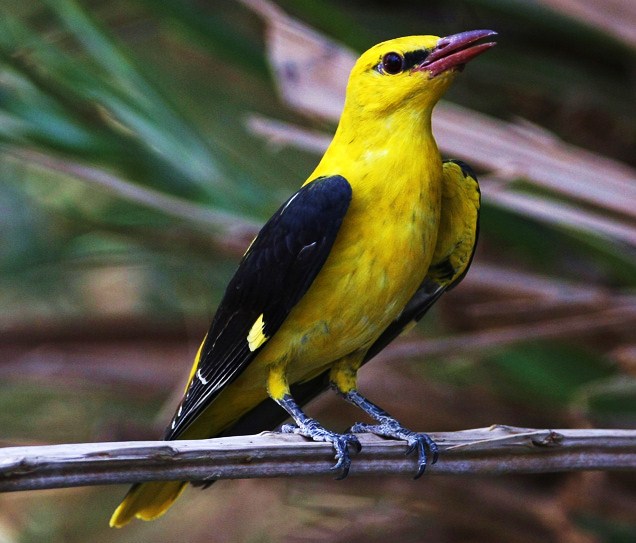Oriolus oriolus
 |
| Photo by Abdul Al-Sirhan (Kuwait Bird Sightings) |
Common name:
Eurasian golden oriole (en); papa-figos (pt); loriot d’Europe (fr); oropéndola europea (es); pirol (de)
Taxonomy:
Order Passeriformes
Family Oriolidae
Range:
This species is found throughout most of continental Europe, from Portugal and Spain to southern Sweden, and east into Russia and Turkey and into Asia all the way to Afghanistan, western China and Mongolia. They migrate south to winter in sub-Saharan Africa, from Cameroon to Kenya and south to South Africa.
Size:
These birds are 20-24 cm long and have a wingspan of 44-47 cm. They weigh 42-72 g.
Habitat:
Eurasian golden orioles breed in a wide range of forested habitats, including open broadleaved forests and plantations, copses, riverine forest, orchards, large gardens, as well as mixed or coniferous forests. They winter in semi-arid to humid woodland, tall forests, riverine forest, woodland-savanna mosaic and savanna.
Diet:
They are omnivorous, feeding on insects, namely bees, butterflies and caterpillars, fruits and berries, and seeds high up in the tree canopy. Occasionally, they also take mice and other small mammals.
Breeding:
Eurasian golden orioles breed in April-July. The female builds the nest, a shallow cup made of plant fibres and stems, placed in a fork in a tree. There she lays 3-4 white eggs with dark speckles, which she mostly incubated alone for 15-18 days. The chicks are fed by both parents and fledge 14-20 days after hatching.
Conservation:
IUCN status – LC (Least concern)
This species has an extremely large breeding range and a global population estimated at 20-100 million individuals. This population is suspected to be stable overall, although in Europe, trends in the last 3 decades suggest a moderate increase.







